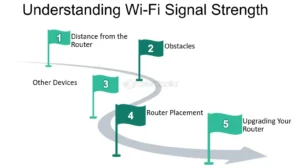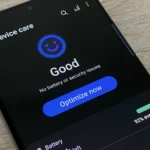Last updated on May 1st, 2025 at 04:46 am
Businesses today want to be as productive as possible and want to boost productivity. Perhaps one of the best tools for businesses that want to do these things is an employee productivity tracker, which monitors and reports on employee activity. Having insight into how your employees are spending their workday has never been more critical with the increased use of remote work and flexible work arrangements. So, let’s find out what these trackers do and how your business can use them.
Knowing Staff Productivity Trackers
A software tool meant to gauge and improve the efficiency of employees’ labor, an employee productivity tracker These technologies gather information on several facets of work performance, hence offering insights that enable managers to make educated choices.
Definition and Goal
Fundamentally, an employee productivity tracker tracks workers’ time and activity. It tracks the time staff members spend on particular projects, apps, and duties. Examining this information helps companies identify areas for development, thereby making sure resources are used wisely. This tracking is a means to create a culture of development and responsibility, not just about monitoring.
Employee Productivity Tracker Types
Various kinds of employee productivity monitors exist, each with different uses, but Controlio is one of the best employee productivity tracker software,:
These programs let staff members record time spent on several activities. Among well-known resources are Time Doctor and Toggl. They provide analysis on how various initiatives get allocated working hours. These systems emphasize employee performance measures. By monitoring goal achievement, feedback mechanisms, and skill development, they enable teams to remain in line with company goals. Software such as Asana and Trello integrate project management with productivity tracking, hence allowing teams to cooperate effectively and track progress.
Advantages of Using Employee Productivity Trackers
Using an employee productivity tracker can provide several benefits for both workers and companies. Some major advantages are listed below:
Improving Time Management
Detailed knowledge of how people allocate their time helps both people and teams to significantly enhance their time management abilities. Employees, for example, may give priority to their efforts and concentrate on high-impact operations by spotting time-consuming chores. more even work is produced from this.
Increasing openness and responsibility
Any team needs responsibility. By increasing workplace openness, employee productivity trackers excel. Employees are more likely to remain engaged and dedicated to their work when they know their time is being monitored. Managers can also handle performance problems proactively, hence promoting a culture of accountability.
Difficulties and Issues to Think About
Though helpful, deploying staff productivity monitors raises ethical issues and difficulties to address.
Effect on Staff Motivation
One such drawback is the possibility of lowering staff morale. Tracking can cause employee mistrust or anxiety if not done carefully. Transparency about how data will be utilized and making sure staff members get the purpose of monitoring helps to offset these worries.
Monitoring with Autonomy in Balance
Although tracking is beneficial, one should balance monitoring productivity with providing staff members the freedom to control their job. Excessively intrusive tracking can lower job happiness and hinder innovation. Maintaining this equilibrium may be aided by encouraging frank conversations about expectations of productivity.
Best Practices for Using Employee Productivity Trackers
Organizations wishing to effectively employ productivity trackers should take into account the following recommended practices:
Establishing Clear Goals
Setting explicit goals is crucial before implementing a productivity tracker. What do you wish to accomplish? Tell staff members these objectives clearly. People are more likely to accept monitoring as a tool for development when everyone knows the reason behind it; otherwise, they may view it as a punishment.
Including Staff Members in the Process Any new tool’s effective integration depends on employee buy-in. Include team members in the choosing and execution process. This not only builds confidence but also motivates comments on the tool’s performance. Decisions made cooperatively can produce more successful results.
Final Words
Ultimately, modern companies need an employee productivity tracker since it offers insightful analysis of how time and resources are used. Used correctly, these trackers help with time management, responsibility, and productivity increase. But, it’s imperative to use them carefully to maintain staff morale and autonomy. Companies may create a culture that respects both productivity and employee well-being by investigating different productivity strategies and keeping open lines of communication. Adopt the possibilities of productivity tracking and see your company flourish.











